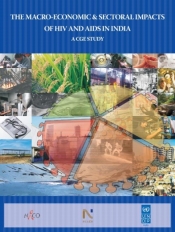The Macroeconomic and Sectoral Impacts of HIV/ AIDS in India: A Computable General Equilibrium (CGE)
Basanta K. Pradhan
V P Ojha
September 2006
In 2005, the number of HIV-infected persons in India was estimated to exceed five million, and this number was projected to increase rapidly. Keeping this in mind, the report analysed the macroeconomic and sectoral impacts of HIV/AIDS using a first of its kind, five-sector computable general equilibrium (CGE) model of the Indian economy. Further, in Part II of the study, an extended 28-sector CGE model of the Indian economy was used to enable a more detailed analysis of the sectoral impact of the AIDS epidemic – particularly the impact of AIDS on Indian industry. The study takes into account the various modes of transmission of the adverse impact of HIV/AIDS on the national economy. All the major effects of HIV/AIDS, viz., decline in total factor productivity resulting from increased mortality and morbidity, change in the skill composition of the labour force due to unequal incidence of AIDS among different grades of labour, fall in savings due to increase in medical bills and deaths of young adults, were incorporated in the analysis. The study clearly highlights the impact of HIV/AIDS on the growth of the Indian economy. The slowdown in economic growth was manifested in a decline in both real aggregate GDP and per capita GDP. In sectoral terms, the AIDS epidemic impacted those sectors more which use unskilled labour intensively, such as tourism and manufacturing.
Computable General Equilibrium Modelling and Policy Analysis







